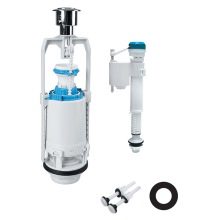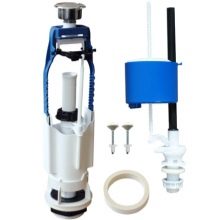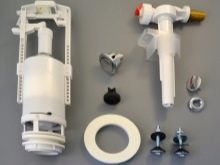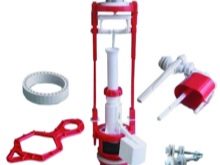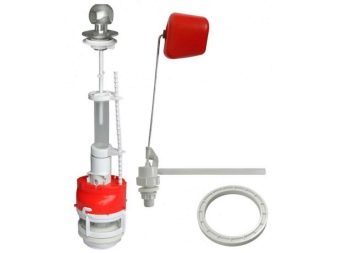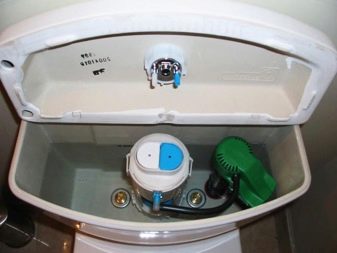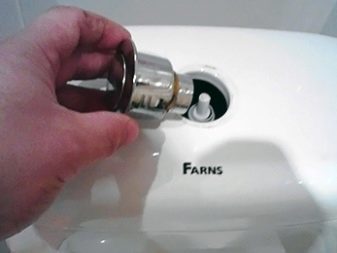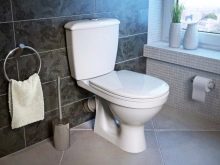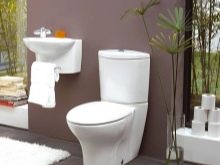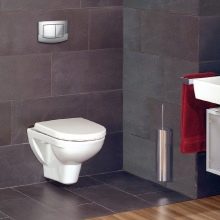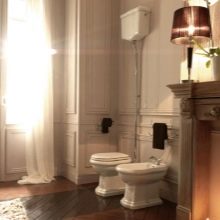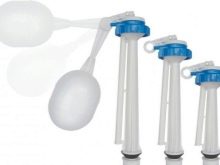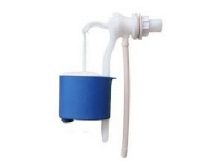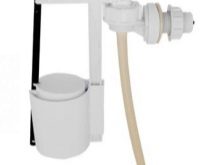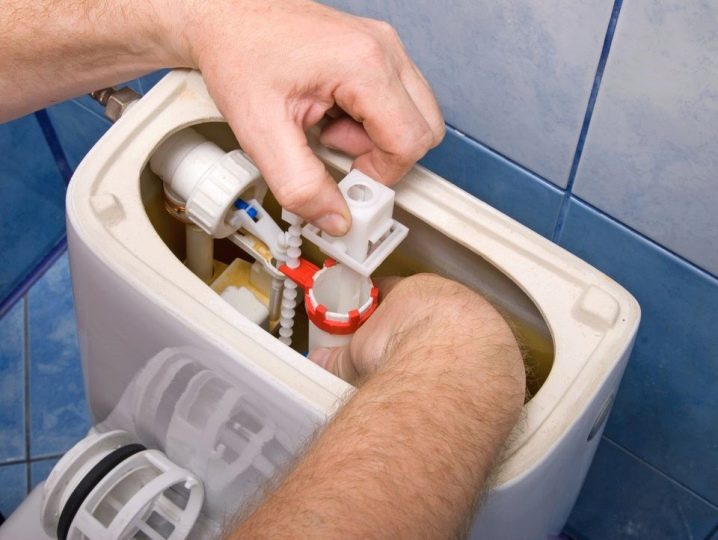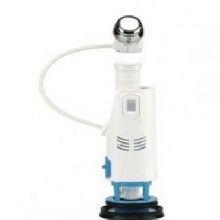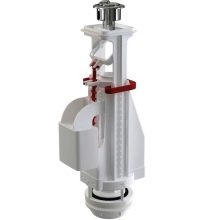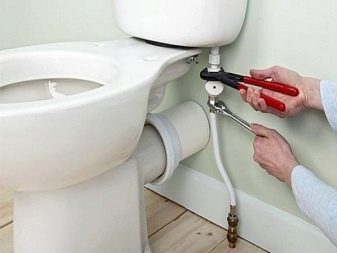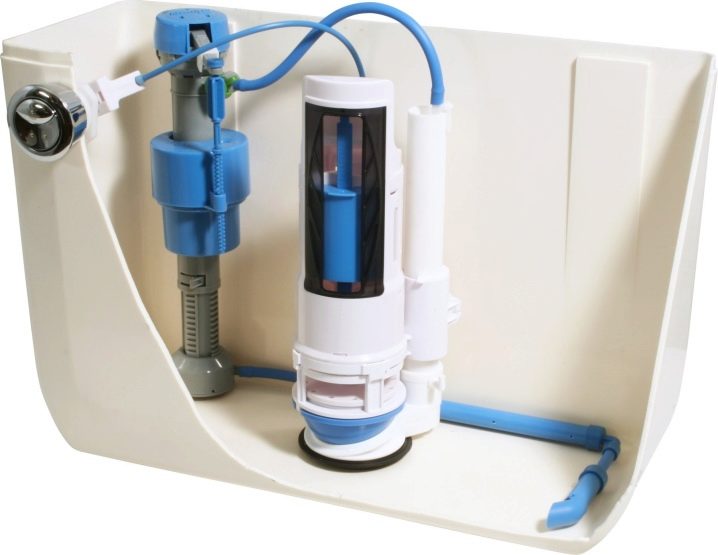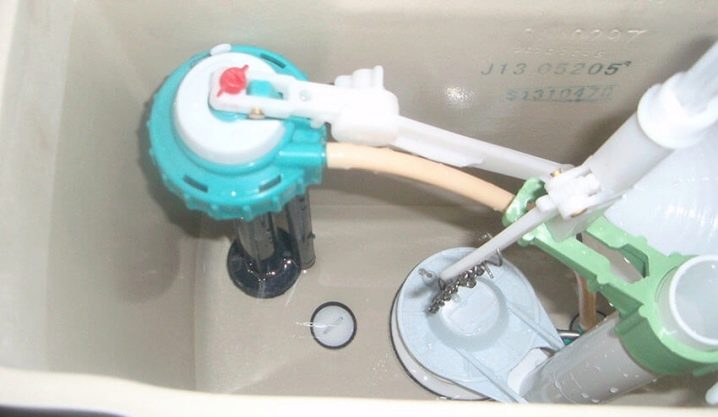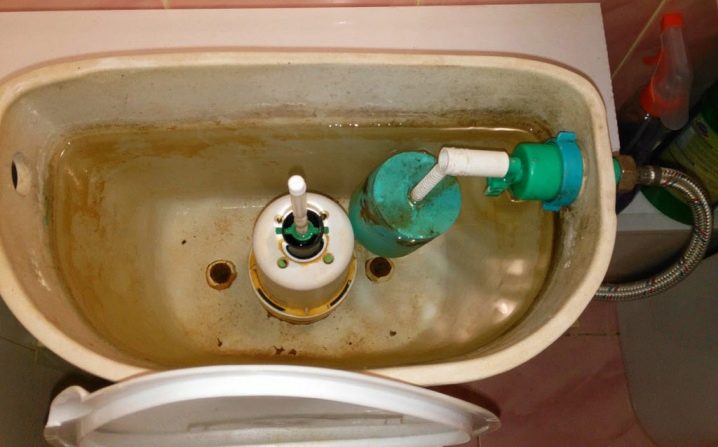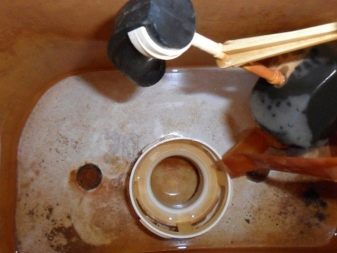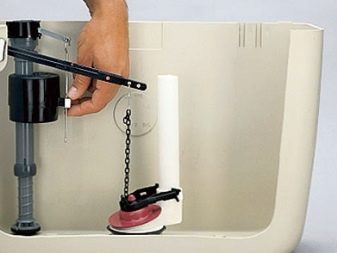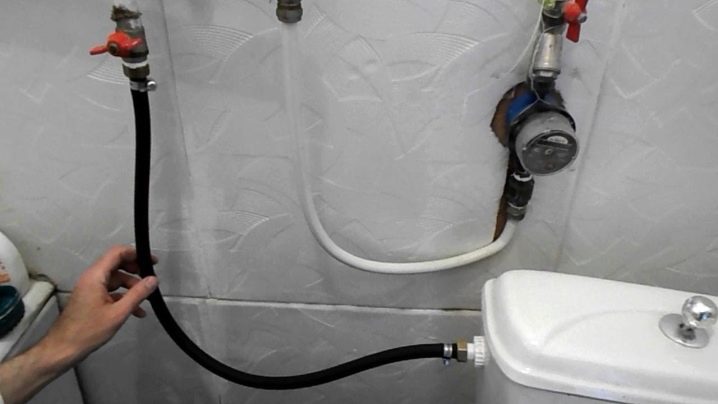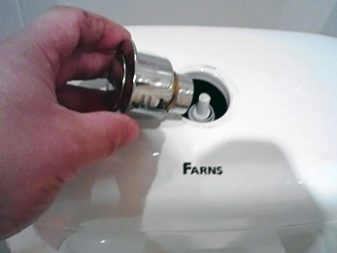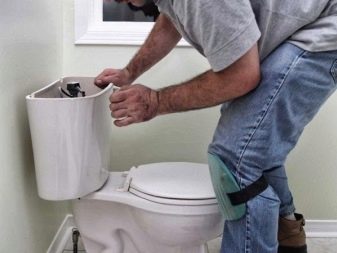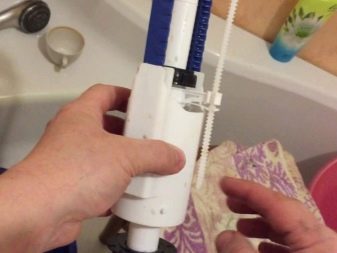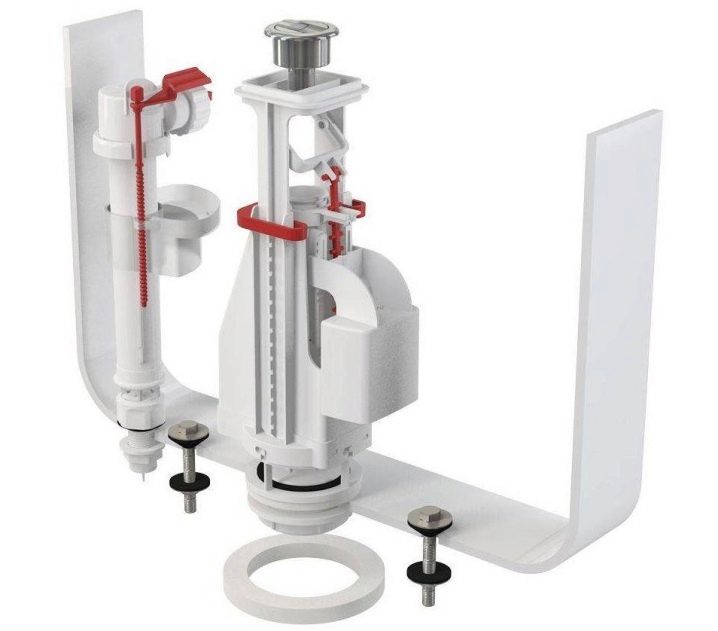How to choose the fittings for the toilet with the lower eyeliner?
It is impossible to imagine a modern home without a bathroom and toilet. In order for the toilet to perform all the functions, it is necessary to choose the right fittings. The current materials can serve for a long time, if you correctly select and install everything.
What is it like?
It does not matter what construction the valve is built into the cistern. It must perform the function of maintaining water in it: when it is filled, turn off the tap, and when it is empty, open it again. The armature consists of a drain unit - a device that must regulate the water pressure and the place of the float. The latter is a kind of sensor that directly determines the need for opening and closing the valve.
The installation of the valve of the cistern with the lower supply line implies the connection of the underwater crane. Allocate two types for a jellied knot: push-button and shtokovy.Water when the button device is drained while pressing, that is, automatically. In the same mode, the water comes down with a stem. But in this case, the handle must be pulled up, and then returned to its original position.
Now more and more modern tanks are used, with a button. For such a mechanism it is necessary that the button in no case protrudes above its surface, the opening must be at least 40 mm. This size is designed for round movements. But there are models of both oval and rectangular.
Advantages and disadvantages
The advantages are a pleasant visual appearance, the toilet is shaped by an extraordinary design and can have an unusual shape that hides the system itself, the lower eyeliner works without noise, water does not run, because it comes from the cistern, it is reliable and almost never needs repair. Minuses: the type of liner is difficult to install, when replacing parts, it is easier to change the system itself.
Constructions
Drain mechanisms often depend on the type of tank, for example, suspended version. This species has been used for a very long time. It had advantages only because of its high position, it gave a strong pressure of water. Hidden tank - a more modern design, but with a complex installation scheme.Installation takes place on a metal frame, and then the drain button is brought out. Mounted tank has been used for a long time, so it is very popular.
Different designs and device valves. Thus, the valve type "Croydon" is in older products. When typing water float it rises and acts on it. When the water fills the tank completely, the valve closes its flow.
Another type, a piston valve, is mounted horizontally, almost no different from the others. For a diaphragm valve, instead of a gasket, use a rubber or bulk membrane.
Such devices do a good job - they quickly shut off the water. But there is one drawback - they serve for a short time. This is due to the quality of water in the pipes - it is too dirty, you have to install filters.
There are several options for controlling the mechanism. Rod systems are a construction on which a rubber valve is installed. It can open or close the drain tank. The design is considered outdated, and everyone tries to change it.Due to the fact that the gasket wears out, water begins to flow. The locking mechanism is used to completely overlap the flow area, the locking element is a spool.
Filling systems
There are push-button filling systems known one-button, when pressed, all the water pours out. Two-button design provides economy. One button is designed for a small flush - only part of the water flows out, the second is needed for a complete flush. Stop-drain - this is a one-button tank, but with one push the water pours out completely, if you press a second time, it will stop pouring.
Water can come from different places, for example, with side connections, inlet water is located on the side and on top. When the tank is filled, the water from the top drops and starts to make noise, it causes discomfort. With the lower liner, the water supply takes place at the bottom of the tank and therefore it does not cause noise. Such designs allow you to hide the supply hose, which makes the appearance of the toilet more aesthetic.
The nuances of choice
Toilet bowl - from the very beginning provided with the necessary drain fittings. While everything works, no one thinks about its repair. But, there comes a time when something breaks down and there are problems with it: leakage or incomplete valve overlap. This means that the valve needs to be repaired.
There are no problems with the acquisition, but you need to choose quality fittingsso she served for many years. The quality of plastic components should be free of defects, that is, without any burrs or bent shape. Such details should be tough. It is necessary to ask the material of manufacture, is considered the best polyethylene. Gaskets should be soft to check this, gently stretch the rubber and direct it to the light, there should be no small cracks.
These are delicate details, they break easily due to polluted water. Therefore, you should buy a set of water filters. The float lever must be moveable and soft and must not stick. Fasteners should be made of plastic, steel parts are not suitable. The scheme must be strong, undiluted, otherwise nothing will work. When buying, you should consider all these factors.Just in case the home should be plumbing repair kit.
Installation Features
From the trigger device, the fastening nut is removed, located in the lower part. Beside the nut, there must be a rubber lining that is needed to seal the mounting. The ring is put down the drain tank, and on the prepared gasket, you should fix the trigger mechanism. Then, it is necessary to remove the locking nut from the filling valve. If reinforcement with a lower connection is used, the nut should be located in the lower part of the device.
If side fittings are used, then the nut is located in the side of the valve. Next you need to put the sealing ring, it should be located on the hole inside the tank. Adjust the inlet valve and tighten the nut. The intake and exhaust valves should not be in contact with each other and with the walls of the drain tank. Such installation is performed by flexible connection, according to which water will flow into the tank. When connecting the liner does not need to leave the gasket.
Check the performance of the valve and, if necessary, adjust the float.If a float is used in the lever, for its normal operation it is enough to bend the engine down to the desired location. If a movable float is used, the travel restriction is secured with a special retaining ring or clamps. At the very end, install the cover and attach the drain button.
Possible problems
If water is regularly collected in the tank, the mechanical valve requires replacement. When the float lever is deformed, try to align it, if not, replace it. If there are problems with the float, then this defect occurs due to loss of tightness, as water is drawn inside and the float stops performing its work.
If water flows down the bottom of the cistern, then the cause of this breakage is in a crack or the bolts are rotten. To avoid this problem, change them. This procedure will require editing the obsolete fasteners and cleaning the landing sites, then install new bolts. When choosing bolts, take brass or bronze - they are not threatened by the formation of rust.
When water flows into the toilet, you should pay attention to the membrane. Remove the siphon and change it.Often this situation occurs when the float adjustment is lost. The lever does not fully block the water, and it enters the toilet through an overflow pipe. This problem can be eliminated by adjusting the float. When you properly adjust the system, it will close the valve at a water level of 1–2 cm.
If it flows from the side connection, then the problem is most likely in the hose. When the water is almost not collected or this process is slow, the intake valve mechanism has reached its end. In the first case, you need to replace the valve, in the second you need to unscrew the hose and try to clean it. This, of course, is not always possible, since it is possible for debris to enter, for example, during repairs. In such cases, it is most often changed.
Valve replacement
Often people think that if one thing is broken, then everything else will be broken. Many people prefer a complete replacement of partial repair. This opinion is hastily and often mistaken, because you can try to correct the situation.
The algorithm for independent actions to replace is quite simple:
- Close the tank valve.
- Remove the drain button.
- Remove the cap and unscrew the hose.
- Remove the top of the column to pull it out, rotate it 90 degrees.
- Unscrew the mount.
- Remove the tank.
- Unscrew the fasteners and remove the old fittings.
- Install new parts in the reverse order of removal.
After you have installed all the components, check for leaks, proper functioning of the float system. The valve position of the float on the lever is adjusted so that when the supply valve is completely shut off, the water level is below the drain line. Everything is quite simple, so it is not necessary to be a professional to do this kind of work.
In more detail about replacement of fittings in a toilet bowl tank you will learn from the following video.

